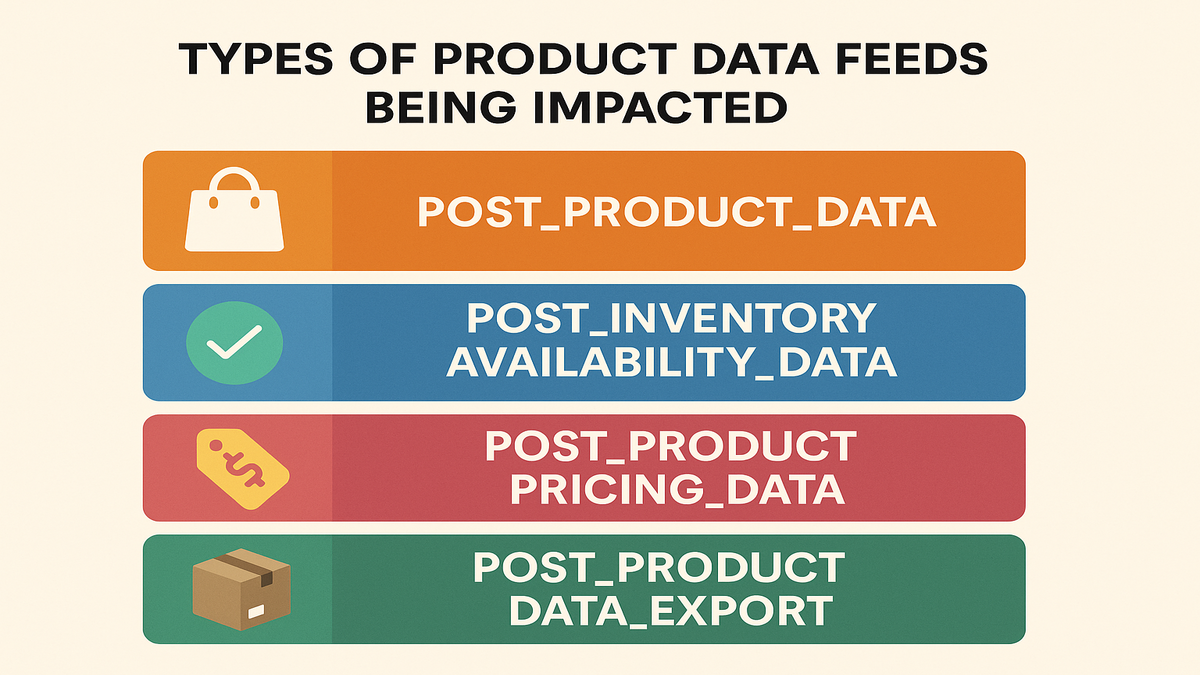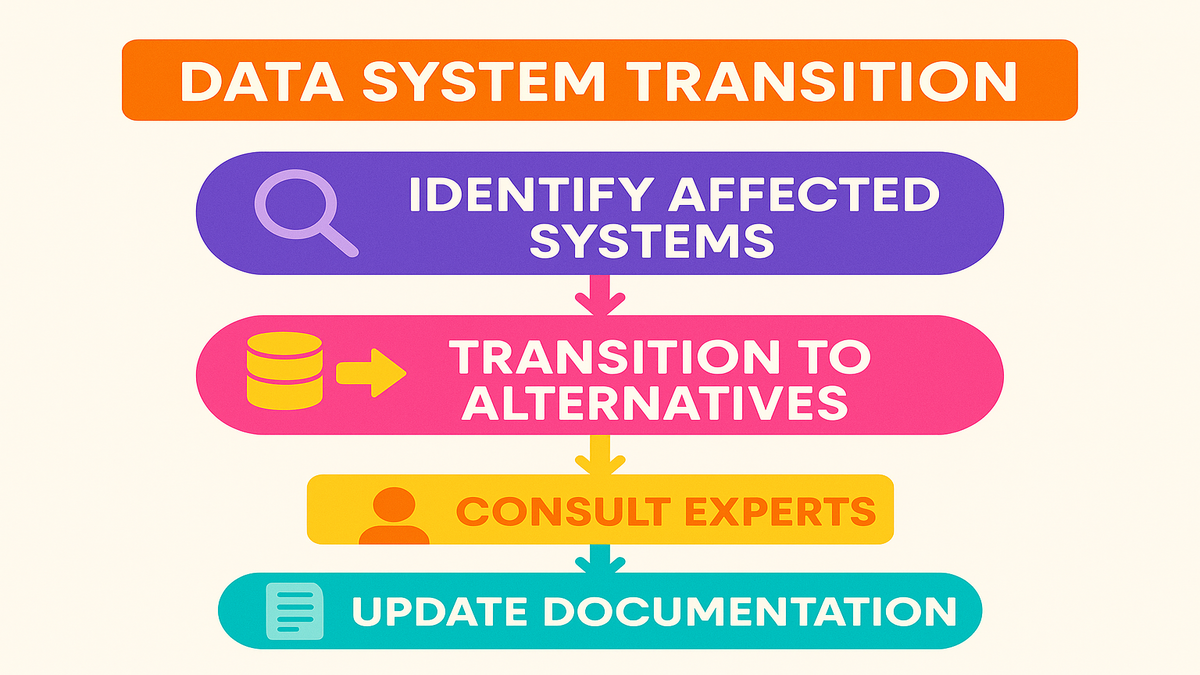
Key Update on Product Data Feed Types for 2025

As data management and tech infrastructure continue to evolve, updates may seem like small speed bumps that morph into mountains if you’re not prepared. The only iron rule is that things change (and you certainly have your hands full of product data and inventory). Miss, and you could descend into chaos.
Are you using feed types that are all over the place like POSTPRODUCTDATA, POSTINVENTORYAVAILABILITY_DATA, and other such alphabet soup? If so, a bit of news to catch your attention. Circle July 31, 2025, in bright red on your calendar. Believe me, you will not want to miss this.
TL;DR:
- The date of ban on specific categories of feed has been extended to July 31, 2025.
- This feed types will no longer work from August 2025 onwards.
- The systems that were compromised involved product information, stock levels and related updates.
- Make sure any necessary adjustments are prepared several days in advance of the deadline.

Reason About Feed Change
Let's unpack the specifics. Potentially more important may be data management and e-commerce personnel, who need data feed types that are effective for their jobs running operations. So what does this all mean for you? As of July 31, 2025, the current feed types will no longer be supported. This is more than just a date in the diary, it is a critical point in making sure your operations run smoothly without a hitch. You get one month of grace to rework your systems and compliance too. Now, imagine driving a car with all its gauges spazzing out — sounds like a nightmare? For companies, the loss of operational efficiency can wreak just as much havoc. These feeds are your business’s equivalent of a GPS, helping guide product listings and inventory management. The inability to adapt could lead to flying blind in a competitive market. You don’t want your data management system to resemble Windows 95 when everyone’s talking cloud computing.
Discover strategic methodology and nuanced examples of effective transitions in our full Case Studies.
How We Got Here
Types of feeds have progressed while fulfilling the requirements of e-commerce sites and a digital market. It’s part of a trend of pulling the plug on older systems to simplify operations and bring in new technology that can promise efficiency and effectiveness. But it’s not just about innovation trends, it’s about regulatory standards and compliance in a world hellbent on digital perfection. Back in the day, data management was a much simpler creature. We had a variety of feed types and fewer system updates. Fast Forward to now, and we are entering a world where everything counts and where agility is your best friend. Companies are also pivoting faster than your favorite F1 team, trying to beat that trophy of smooth integration.
Current Landscape and What's Next
The clock is ticking, for now. Industries are also in a hurry to embrace new systems that will be capable of smoothly evolving, without clunky transition stages. Your job is to be on the lookout for disruptions. And while you could easily procrastinate, keep in mind that you have only until June 2025 to make those changes before the party’s over. This is an opportunity to avoid technology whiplash! More and more businesses are now considering AI and machine learning as a means to add even more efficiency to how they manage their data. The secret is to get ahead of these curves, to welcome the change, rather than be blindsided by it. The future may be devoid of free jetpacks, but it does offer efficient operations to those few dutiful souls who dare to innovate.

Action Needed
So, where should you go from here?
- Discovery /u/: Perform a deep commit on how and where these feed types affect your business.
- Move to Alternatives: Make sure to investigate and apply feeds that are closer to future plans and standards.
- Get Advice: Ask the pros who do this all the time to help you do it better.
- Document Updates: Work with internal teams and ensure the latest hand books on system changes for seamless transitions.
Final Thoughts
Let this be a wake-up and preemptive warning to commotion. Pay attention to these changes as an essential aspect of business continuity planning. As digital climates mature, keeping up with updates isn't only about avoiding early-stage errors — it's about making the most of every available edge. For a more in depth solutions integrating dynamic and adaptive tools in your process check out our Features page.
Link up strategy with more intelligence on the ground with our new guides on migrating data systems and strengthening compliance. Not just survive updates—thrive through them. Get strategizing today.
References
- System Update Compliance for 2025. Source One
- Feed Type Transition From the community. Second Source
- Businesses and Tech Shifts: A Realigning. Source Three

